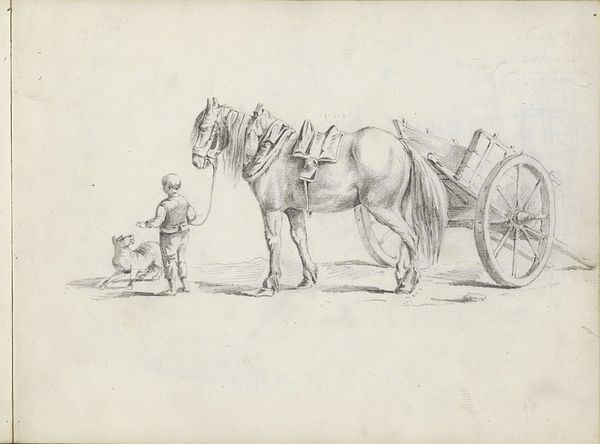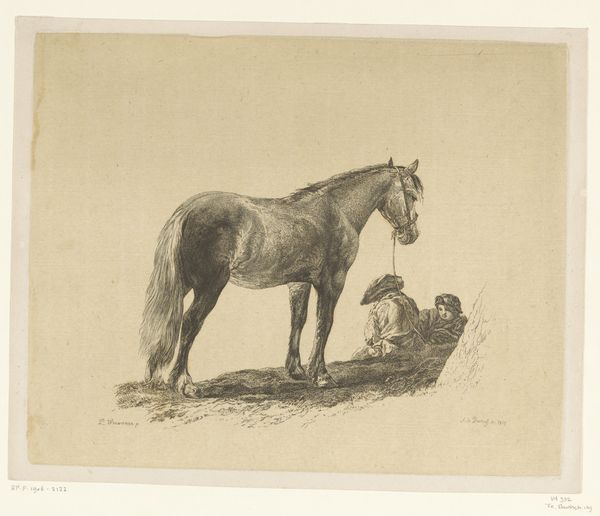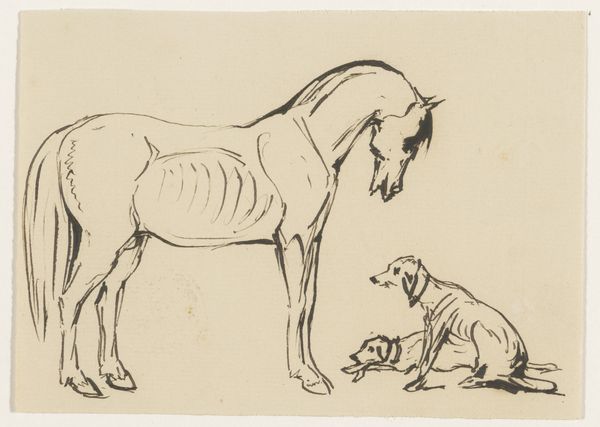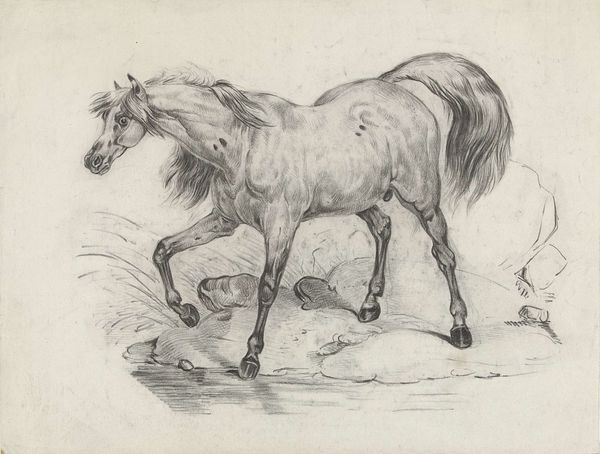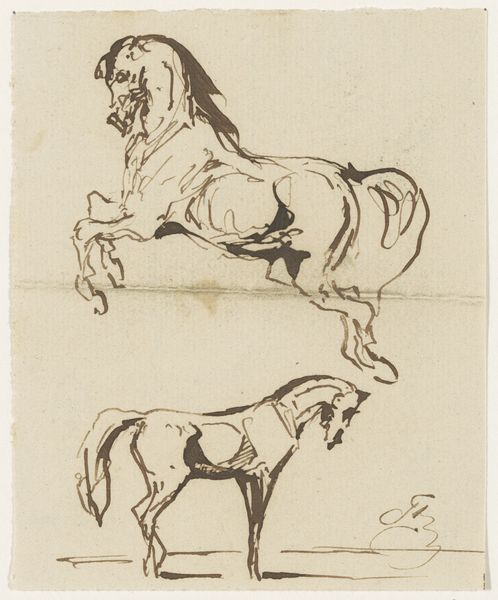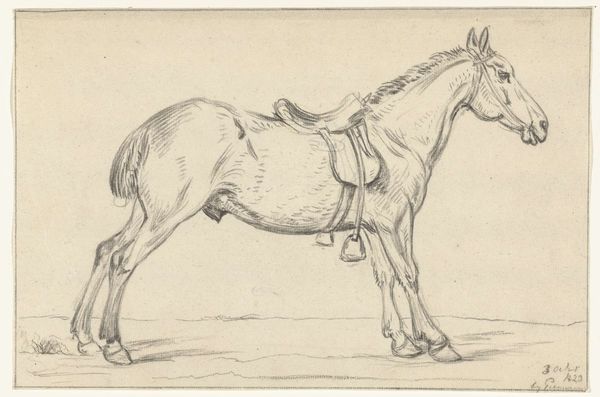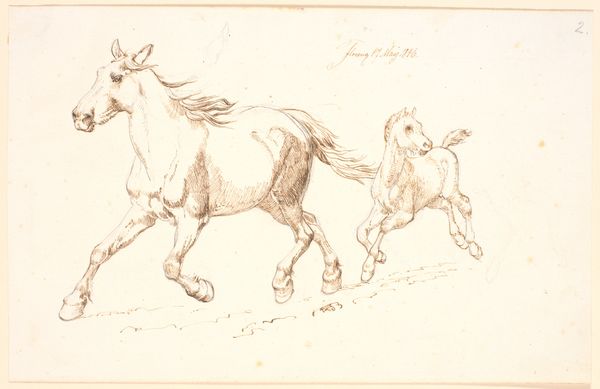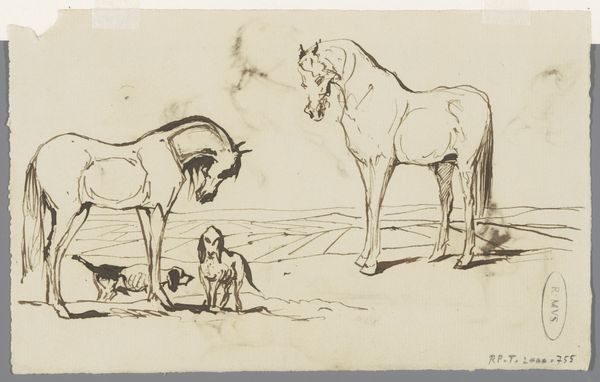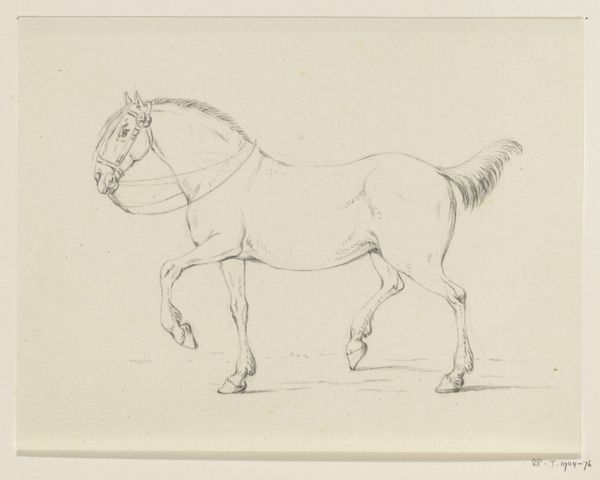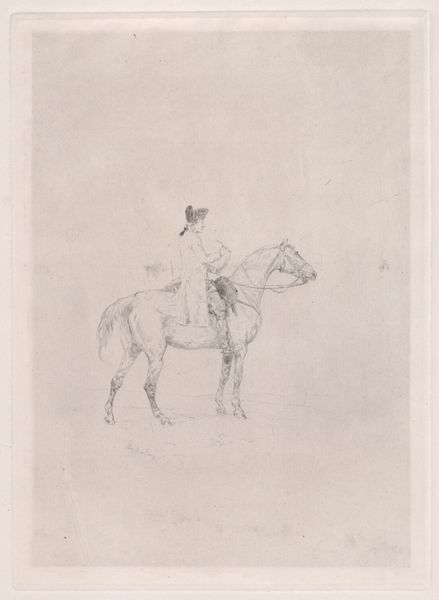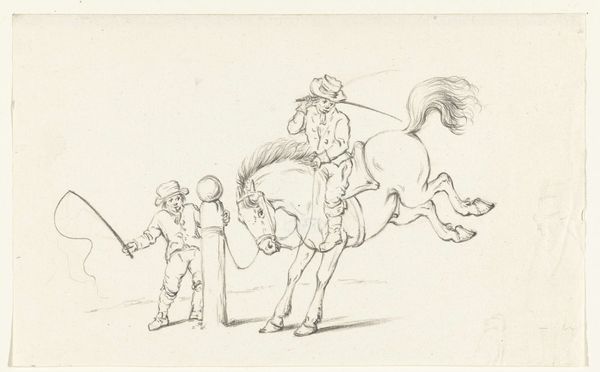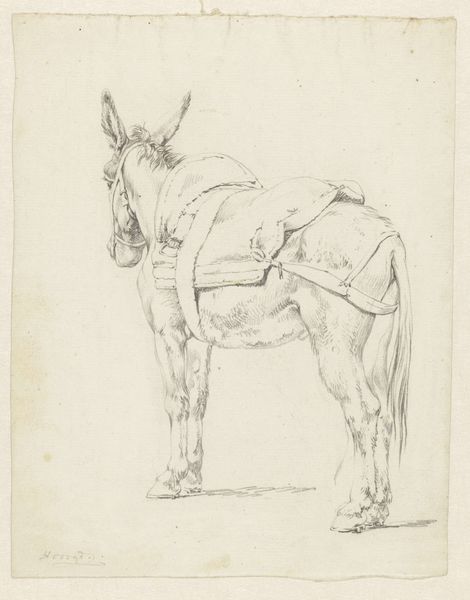
drawing, ink, pen
#
drawing
#
imaginative character sketch
#
quirky sketch
#
dog
#
landscape
#
figuration
#
personal sketchbook
#
ink
#
idea generation sketch
#
sketchwork
#
ink drawing experimentation
#
pen-ink sketch
#
horse
#
line
#
sketchbook drawing
#
pen
#
fantasy sketch
#
realism
#
initial sketch
Dimensions: height 143 mm, width 199 mm
Copyright: Rijks Museum: Open Domain
Hendrik Abraham Klinkhamer created this etching of a saddled horse and dog in 1841. Etching is an intimate process, where the artist draws into a waxy ground on a metal plate, which is then exposed to acid. The acid bites away the exposed lines, creating grooves that hold ink. The plate is then wiped clean, leaving ink only in the etched lines, and printed onto paper. In this particular print, we see Klinkhamer's assured line work; each stroke decisive, confident. Note the texture he's able to create, particularly in the horse's mane and tail, and the soft fur of the dog. The leathery saddle is also well-described. The appeal of etching for artists like Klinkhamer was its relative ease and the ability to produce multiple copies. This connected with a broader market for art in the 19th century, enabling artists to reach a wider audience beyond traditional patronage. It’s a reminder that even seemingly simple images like this one are embedded in larger economic and social systems.
Comments
No comments
Be the first to comment and join the conversation on the ultimate creative platform.

